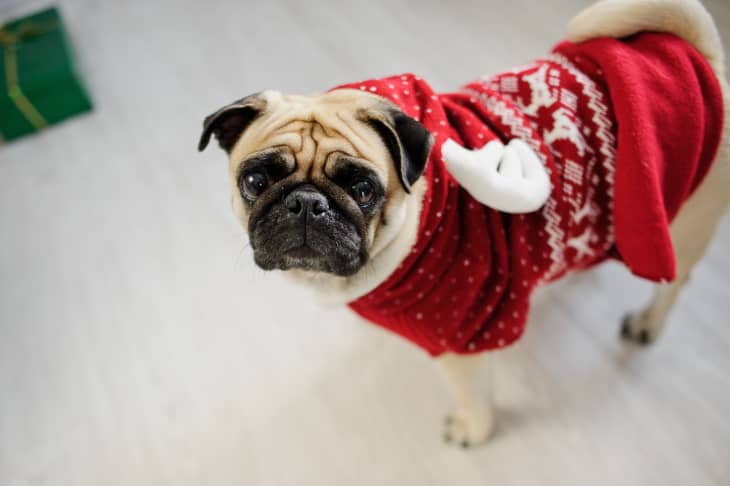You Can Blame Canada for the Rise of the Ugly Christmas Sweater

Maybe I’m dating myself a bit here, but I remember a time, way back in the 1980s, when ugly Christmas sweaters were just called Christmas sweaters. I never owned one of these, as I’m pretty sure that the idea of a sweater that could only be worn a few times a year would’ve been an offense to my mother’s highly practical sensibilities, but I remember them in the women’s section at JCPenney, and I remember my elementary school teachers wearing them, joyfully and unironically.
Fast-forward 20 years, and now ugly Christmas sweaters, worn with a heavy degree of irony, are a staple of dedicated Christmas parties everywhere. Vintage stores can’t quite meet the demand, so people are even buying ugly sweaters new—or making their own. How did we get here?
When I went searching for answers, I assumed I would find that the origins of the ugly Christmas sweater craze, like those of so many cultural trends, were shrouded in mystery. But it’s quite the opposite. Two Canadians, Jordan Birch and Chris Boyd, lay claim to having hosted the very first Ugly Christmas Sweater Party, in Vancouver, Canada, in 2001. Chris was working at a retirement home, and Jordan was inspired by a very festive sweater that belonged to his Aunt Mary. They wanted to host “a cheesy, feel-good, festive party, so the sweaters were a main ingredient of that.” Thus was born a cultural phenomenon.
Searches for “ugly Christmas sweater” appear as a small blip on the Google Trends radar in 2004, the first year data is available, but by 2014 they had really taken off. If the projected data is to be believed, this year, ugly Christmas sweaters are more popular than ever.
There are other indicators of the sweaters’ popularity. In 2008, they earned a mention in the mocking blog Stuff White People Like. In 2010, the phenomenon earned a mention in the Wall Street Journal. In 2013, a couple of entrepreneurs, having observed that vintage stores were unable to keep up with the demand for ugly sweaters, saw an opportunity. Powered by an appearance on “Shark Tank”, they created Tipsy Elves, an entire business devoted to selling cheesy Christmas apparel. (In the interest of inclusivity, they also sell ugly Hanukkah sweaters.)
In 2014, the organizers of the original Ugly Christmas Sweater Party started The Ugly Christmas Sweater Dash, billed as “the hottest and itchiest 5K ever”. The event is still going on, and was held this year on December 2nd. The original Ugly Christmas Sweater party, now in its 16th year, is likewise still going strong: you can buy a ticket here.
After tracing the history of the ugly sweater phenomenon through the last 1.5 decades, one question remains: why? I think the love for ugly sweaters speaks to the spirit of our times. We’re all a bit world-weary and ironic, but also nostalgic for a simpler, purer time. An ugly Christmas sweater speaks clueless dad, but it also speaks simple, unabashed joy, a liberation from the occasionally restricting tenets of good taste. Wearing it mocks the one and celebrates the other, equally, a beautiful synthesis of sentiments that only this weird relic from the ’80s could bring about. So let’s all raise a glass (or maybe a sweater-adjacent red cup) to the ugly Christmas sweater…and don’t forget your ornament earrings.